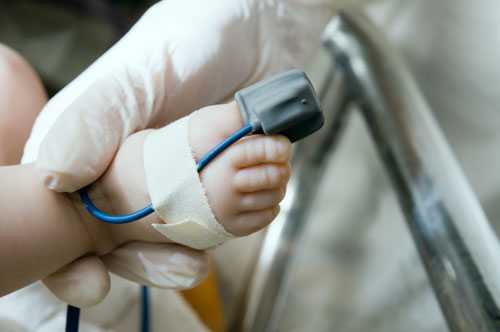Current Research Activities

CDC is working with partners to learn more about how well critical CHD screening works, the costs of critical CHD screening, and how hospitals and states have put screening programs into place.
Number of States Screening
At least 43 states have passed a law, regulation, or hospital guidelines requiring hospitals to screen newborns for critical CHDs. The remaining seven states support screening newborns in hospitals, even though they do not require it.1
Find out more about critical CHD screening throughout the United States.
Collaboration with State-based Birth Defects Tracking
State-based birth defects tracking programs monitor the number of babies born with different birth defects, such as critical CHDs. Each year, state-based birth defects tracking programs report data on over 40 major birth defects in their state to the National Birth Defects Prevention Network (NBDPN). In 2012, the NBDPN released a brief data report looking at the number of children affected by critical CHDs. States are using birth defects tracking systems, as well as state newborn screening programs, to track how well critical CHD screening is working.
CDC recently published a survey of state birth defects tracking programs to see how they could assist with critical CHD screening. Some ways that state-based birth defects tracking might be able to help see if critical CHD screening is working are shown below:
- Report the number of babies screened for critical CHDs
- Report how many babies passed or failed critical CHD screens
- Report how many screen results were false positives (a baby who fails the screen but doesn’t have a critical CHD)
- Report how many screens were false negatives (a baby who passes the screen but actually has a critical CHD)
- Compare death and disability in babies with a critical CHD before and after screening is started in a state
- Compare interventions for babies with a critical CHD before and after screening is started in a state
- Compare costs for babies with critical CHDs before and after screening is started in a state
CDC Activities
In 2011, screening for critical CHDs was added to the Recommended Uniform Screening Panel for newborn screening.2 Since then, CDC has been researching how well critical CHD screening works, the concerns of state and local governments involved in carrying out screening, and the health outcomes of babies who get screened. CDC’s tracking and research activities for critical CHD screening include:
- Looking at how different states have started screening for critical CHDs in their hospitals, how many babies with critical CHDs have been found, and problems that might impact the success of critical CHD screening [Read more about critical CHD screening in New Jersey and Georgia]
- Studying if critical CHD screening is good value for the money, or cost-effective, as more states begin to screen babies for critical CHDs [Read summary]
- Evaluating how much critical CHD screening will cost for each baby screened [Abstract]
- Learning what factors might impact whether a baby is diagnosed with a critical CHD before being sent home [Read summary]
- Exploring how birth defects tracking programs and newborn screening programs can work together [Read issue brief]
- Estimating the number of babies with late diagnosed critical CHDs that could potentially be detected through screening [Read summary]
- Estimating the number of babies detected and missed with critical CHD screening [Read summary]
Future Steps
Although researchers are learning more about critical CHD screening efforts, much work remains. Moving forward, CDC is dedicated to learning more about tracking, implementation, and research, including:
- Using data from screening in practice to adjust and refine the set of rules for pulse oximetry screening for critical CHDs
- Evaluating methods to help make a diagnosis (e.g., telemedicine) for nurseries with limited resources
- Linking critical CHD screening and birth defects tracking data to evaluate current screening methods
- Analyzing the impact of screening on long-term outcomes
- Researching screening among certain populations (e.g., those living at higher altitudes)
- Tracking screening implementation across the United States
- Developing a critical CHD screening procedure for Neonatal Intensive Care Units
- Continuing to work with states that are starting critical CHD screening, including work on establishing screening procedures, data collection, and reporting
These activities can provide important information for our continued efforts to study the impact of critical CHD newborn screening across the United States.
References
1Glidewell J, Olney RS, Hinton C, Pawelski J, Sontag M, Wood T, Kucik JE, Daskalov R, Hudson J. State legislation, regulations, and hospital guidelines for newborn screening for critical congenital heart defects — United States, 2011–2014. Morb Mortal Wkly Rep. 2015:64(23):625-630.
2HHS Secretary Sebelius’ letter on adding CCHD to the Recommended Uniform Screening Panel
- Page last reviewed: June 27, 2017
- Page last updated: June 27, 2017
- Content source:


 ShareCompartir
ShareCompartir